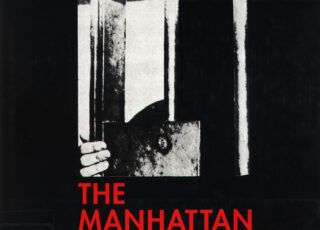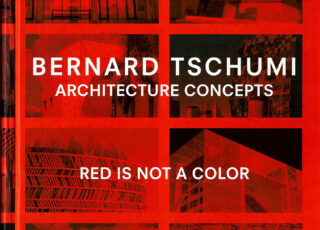Matrix, Making Space: Women and the Man-Made Environment
This book is about women’s relationship to buildings and to the spaces between them – our created surroundings, including homes, their arrangement in ...
Continue Reading →- _English Language
- 1750-1850
- 17th Century
- 17th culture and other cities in Italy
- 19th century
- Bernini
- Christian Iconography
- Empire, Architecture + Catholicism
- England & British Isles
- France
- Gothic
- Italy
- Monuments + Conservation
- Popes, Vatican, Rome
- Renaissance
- Roman Architecture
- Rome
- Schinkel
- Spain
Pevsner, An Outline of European Architecture
For over sixty years Sir Nikolaus Pevsner’s study of European architecture has been regarded as a seminal work which has inspired countless students ...
Continue Reading →Speck, Walkable City
Jeff Speck has dedicated his career to determining what makes cities thrive, and he has boiled it down to one key factor: walkability. ...
Continue Reading →Forensic Architecture, Forensis: The Architecture of Public Truth
The role of material forensics in articulating new notions of the public truth of political struggle, violent conflict, and climate change are the ...
Continue Reading →Jencks, The Language of Postmodern Architecture
Written in 1977, it was the first to define Post-Modernism in architecture – an event which led to its subsequent adoption in other ...
Continue Reading →Craig, Atlanta Architecture: Art Deco to Modern Classic, 1929-1959
Having been one the most successful boomtowns of the early twentieth century, Atlanta saw a transition from a town known for its Southern ...
Continue Reading →Heschong, Thermal Delight in Architecture
Our thermal environment is as rich in cultural associations as our visual, acoustic,olfactory, and tactile environments. This book explores the potential for using ...
Continue Reading →Stickley, Gustav Stickley’s Craftsman Homes and Bungalows
In 1901, Gustav Stickley began to create the first uniquely American style of furniture and home design—known as Craftsman. Stickley’s principles of home ...
Continue Reading →Gropius, Scope of Total Architecture
Key texts by one of the main modernist architects and theorists, the founder of the Bauhaus School, Walter Gropius. Compiled by the author ...
Continue Reading →Hübsch, In What Style Should We Build
When Heinrich Hübsch published In What Style Should We Build? in 1828, German Neoclassicism―like its counterpart in France―was in rapid descent, thereby opening ...
Continue Reading →Most liked books

Tschumi, The Manhattan Transcripts
May 23, 2025
Tschumi, Red is not a Color
May 23, 2025Recent Comments
Categories
- _English Language 1454
- _French Language 55
- _German Language 69
- _Italian Language 54
- _Latin Language 45
- 1750-1850 64
- 17th Century 77
- 17th culture and other cities in Italy 5
- 19th century 45
- 20th Century 151
- 21th Century 75
- Aesthetics 5
- Afrofuturism 3
- Ancient Literature 37
- Anthropocene 1
- Anthropology 3
- Architectural Theory 228
- Architecture + Philosophy 37
- Architecture and Literature, Symbolism 36
- Art 13
- Art Theory 110
- Artificial Intelligence 11
- Artists in Rome 20
- Astronomy 2
- Autobiography 1
- Bernini 19
- Biology 5
- Catalogue 2
- Christian Iconography 18
- Christianity 13
- Cinema 2
- City 45
- Classical 1
- Construction 1
- Contemporary 2
- Design 29
- Digital Architectonics 26
- Drawings 41
- Economy 31
- Empire, Architecture + Catholicism 14
- England & British Isles 26
- Enlightenment Library 127
- Evolution 6
- Fashion 6
- Feminism 20
- Film Festival 1
- France 47
- Gender and Sexuality Studies 5
- Gothic 13
- Greek, Roman Library 99
- Historiography 43
- Humanism 12
- India 5
- Islam 5
- Italy 80
- Landscape Architecture 8
- LGBT 1
- Libraries 0
- Linguistics 6
- Literary Criticism 11
- Literary Theory 82
- Literature 95
- Low Countries (Benelux) 14
- Mathematics 61
- Medicine 4
- medieval library 38
- medieval literature 12
- Modern 51
- Monuments + Conservation 27
- Music Theory 1
- Mysticism 4
- Mythology 19
- Nature, Ecology, Animals 4
- Neurobiology 1
- Opera 5
- Philosophy 346
- Physics 16
- Poetry 6
- Politics 76
- Popes, Vatican, Rome 27
- Portrait, Sculpture, Materiality 56
- Post-Modern 22
- Programming 2
- Psychology 22
- Religion 23
- Renaissance 86
- Renaissance Library 80
- Rhetorics 1
- Roman Architecture 21
- Rome 122
- Schinkel 8
- Science 57
- Sociology 21
- Sound 7
- Sources 56
- Spain 10
- Switzerland 48
- Uncategorized 73
- Urbanism 53
